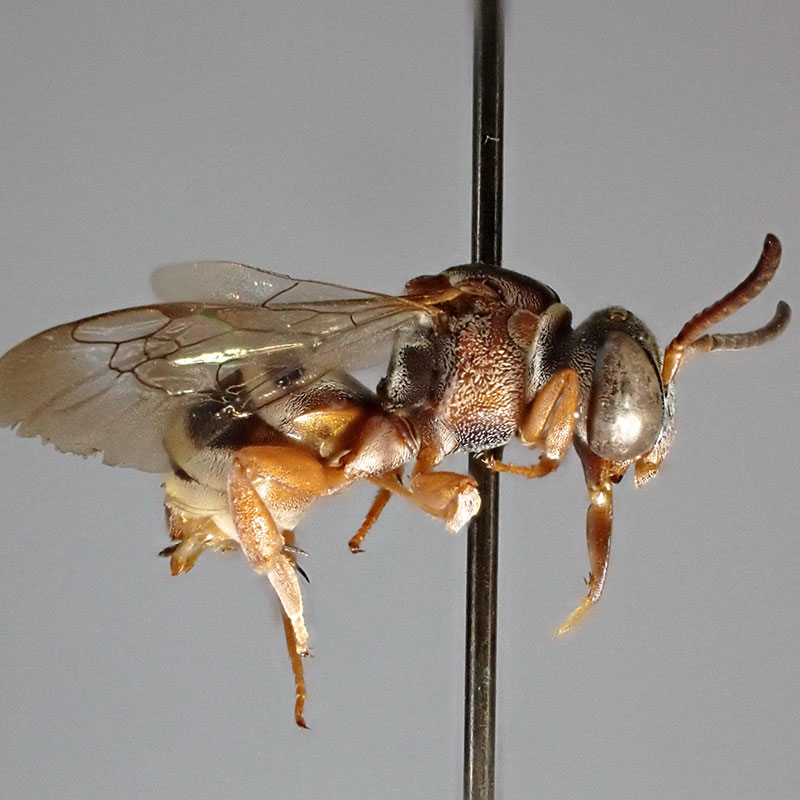Ainslie’s Cuckoo Nomad Bee

University of Minnesota Insect Collection
A small bee with a black and white pattern on its abdomen and thorax. Because e. ainsliei, like all cuckoo bees, do not need to collect pollen for their young, they do not have hairy bodies.
Status in North Dakota
Possible resident.
Reason for SWAP Designation
SGCN (c). At-risk, expert review, or recent assessment.
E. ainsliei, like all cuckoo bees, display kleptoparasitic behavior of laying their eggs in the nests of other bee species.
So they are depending on healthy prairies that can support not only their species, but the species they nest parasitize as well.
Threats
Cuckoo bees are kleptoparasitic and depend on other bee species to host their young.
Declines of host species play a large role in the declines of cuckoo bees.
The loss of foraging and nesting habitat, as well as the widespread use of pesticides, may also negatively impact the current populations.
Other threats include habitat degradation and fragmentation, naturals pests and diseases, and climate change.
Research and Monitoring
Statewide pollinator surveys have been completed by the USFWS HAPET team and NDSU.
Pollinator surveys should continue throughout the state to determine species presence in ND.
Management Recommendations
- Develop pollinator habitat.
- Protect and manage high quality native prairie.
- Develop connectivity between quality habitats.
- Promote healthy grazing systems to fight mat forming grasses such as Kentucky Blue grass (as both of this species known hosts are ground nesting bees).



